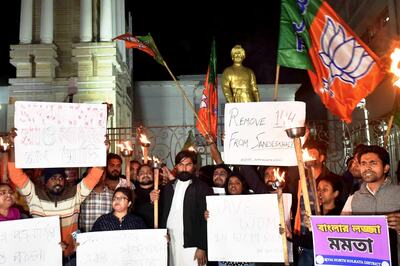
views
LONDON: The G20 group of rich nations and big emerging powers will extend their Debt Service Suspension Initiative (DSSI) until the middle of next year, a draft communique showed on Tuesday, to help the world’s poorest countries cope with the fallout of the COVID-19 crisis.
Below is an explanation of how the DSSI works:
The DSSI was approved in April. It offers a temporary suspension of “official sector” or government-to-government debt payments. The proposed extension will see it run until June next year.
The payments covered are not forgiven but delayed, with a repayment period of three years and a one-year grace period. The re-scheduling is intended to be what is known as Net Present Value (NPV) neutral.
The World Bank estimates that, to date, 43 of a potential 73 eligible DSSI countries have deferred just over $5 billion of debt.
To receive DSSI relief, countries are required to apply for an arrangement with the International Monetary Fund. That could be either a regular programme or a shorter-term emergency facility. [Rapid Financing Instrument (RFI) or Rapid Credit Facility (RCF)]
Countries have to commit to use freed-up resources to increase social, health, or economic spending in response to the current crisis. Beneficiaries also commit to disclose all public sector debt and debt-like instruments.
Eligible countries would include all International Development Association (IDA) countries and all least developed-countries (as defined by the United Nations) that are current on debt service to the IMF and the World Bank. This means 72 active IDA borrowing countries plus Angola.
Estimates suggest that official bilateral debt service payments in these countries would have totalled almost $14 billion in 2020, including interest and amortization payments. Less than $4 billion of that is owed to the Paris Club group of major creditor countries, so other official bilateral creditors such as China and Russia are also being urged to take part.
The G20 has also called on commercial creditors such as banks and investment funds to participate on comparable terms, but there has been no sign of that happening so far.
It is estimated that extending the temporary freeze by six months will provide a further $6.4 billion of relief for the 43 countries that have already signed up to DSSI.
That would rise to around $11.5 billion if the extension was lengthened to the end of 2021 or nearly $16 billion if all 73 eligible countries took up the initiative.
So far, no country has publicly applied for similar treatment from private-sector creditors.
(GRAPHIC – How much debt relief will DSSI provide countries: https://fingfx.thomsonreuters.com/gfx/mkt/xklpyqjbwpg/Pasted%20image%201601420726673.png)
(Compiled by Marc Jones; Editing by Paul Simao)
Disclaimer: This post has been auto-published from an agency feed without any modifications to the text and has not been reviewed by an editor
Read all the Latest News and Breaking News here


















Comments
0 comment